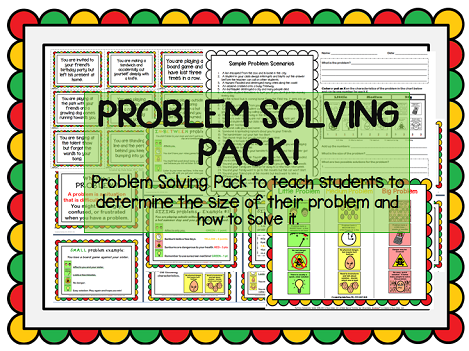For those of you unfamiliar with EET, it is basically a visual of multicolored circles. Each circle represents a different descriptive aspect of an item: Green - Group, Blue - What does it Do, Eye - What does it look like, Brown - What is it made of, Pink - Parts, White - Where do you find it, Orange - What else do you know?
Students are guided through this hierarchy and provide the respective information about the item they are describing. I like EET because it is visual and easy to implement.To add some variety to my EET session, I came up with a really fun game that my students just loved: Musical EET! And the best part is that you can recreate it for virtually less than $1.50.
You will need:
* Felt sheets (Green, Blue, White x2, Brown, Pink, Orange)
* A paper plate or other large circular object
* A marker
* Scissors
* Some sort of music
 |
| Cheap materials. |
1. Using the paper plate and marker, draw circular templates onto each felt sheet.
2. Cut out the circles.
3. On one of the white circles, draw the outline of an eye and cut a smaller circle from the leftover blue felt which is glued in the middle of the eye (this will be the iris). Draw some eyelashes.
4. On the orange circle, use the marker to draw a big question mark.
 |
| Our EET circle. |
 |
| Game play. |
My students had a blast with this game and the activity reinforced their memory of what each color stands for. In addition, the movement piece added a kinesthetic component and was especially feasible for my students with an ADHD diagnosis.
~Viola







